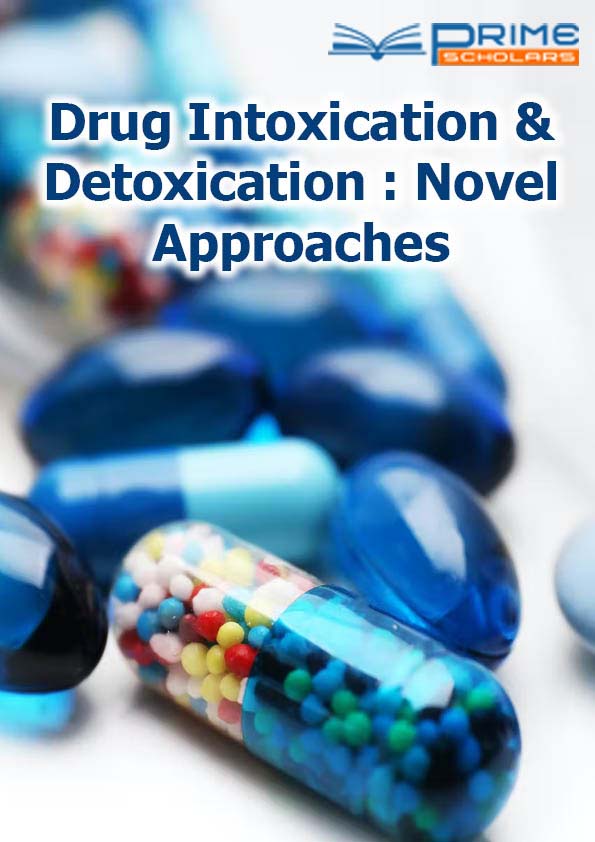Commentary - (2025) Volume 6, Issue 2
Unlocking the Potential of Oral Delivery: Revolutionizing Medicine One Swallow at a Time
Oliver Robinson*
Department of Drug Delivery, Chicago University, Chicogo, USA
*Correspondence:
Oliver Robinson, Department of Drug Delivery, Chicago University, Chicogo,
USA,
Email:
Received: 14-May-2024, Manuscript No. DIDNA-24-19866;
Editor assigned: 16-May-2024, Pre QC No. DIDNA-24-19866 (PQ);
Reviewed: 30-May-2024, QC No. DIDNA-24-19866;
Revised: 13-Jun-2025, Manuscript No. DIDNA-24-19866 (R);
Published:
20-Jun-2025, DOI: 10.36648/DIDNA.6.2.57
Description
In the realm of medicine, delivery methods have always been a critical aspect of treatment efficacy and patient comfort. Among the various modes of administration, oral delivery stands out as one of the most preferred and versatile options. From pills and capsules to liquids and suspensions, oral medications offer convenience, accessibility and patient compliance. As technology advances and scientific understanding deepens, the landscape of oral delivery is evolving, promising even greater effectiveness and efficiency in delivering therapeutics. Oral delivery has been a cornerstone of medical practice for centuries. Ancient civilizations utilized various forms of herbal concoctions and elixirs, often administered orally, to treat ailments and promote well-being. However, it wasn't until the modern era that oral delivery truly came into its own with the development of pharmaceuticals and controlled drug delivery systems. The appeal of oral delivery lies in its simplicity and non-invasiveness. Swallowing a pill or liquid requires minimal effort and poses little to no discomfort compared to injections or invasive procedures. This ease of administration fosters patient compliance, crucial for the success of long-term treatment regimens. Despite its widespread use, oral delivery is not without its challenges. Factors such as pH variations, enzymatic degradation and limited absorption can hinder drug bioavailability, rendering oral medications less effective. To overcome these obstacles, researchers and pharmaceutical companies have been devising innovative strategies to enhance oral drug delivery. Nanotechnology, for instance, offers promising solutions by enabling the encapsulation of drugs within nanoparticles, protecting them from degradation and facilitating targeted delivery to specific sites within the GI tract. While traditional oral dosage forms like pills and capsules remain popular, the landscape of oral delivery is expanding to encompass a diverse array of formulations. Chewable tablets, Orally Disintegrating Tablets (ODTs) and oral films are gaining traction, offering alternatives for patients who have difficulty swallowing conventional solid dosage forms. These formulations dissolve or disintegrate rapidly in the mouth, bypassing the need for swallowing and providing rapid onset of action. Furthermore, the emergence of novel delivery platforms such as microneedle patches and buccal films opens up new possibilities for oral drug delivery. Microneedle patches, consisting of microscopic needles that painlessly penetrate the mucosal layers of the oral cavity, enable the systemic delivery of therapeutics with enhanced precision and efficiency. Buccal films, thin strips placed in the buccal cavity, offer a discreet and convenient alternative to traditional dosage forms, allowing for controlled release of drugs directly into the bloodstream. Advancements in pharmacogenomics and personalized medicine are driving the customization of oral drug delivery to individual patient needs. By leveraging genetic information and biomarkers, healthcare providers can tailor treatment regimens to optimize therapeutic outcomes and minimize adverse effects. For example, patients with genetic variations affecting drug metabolism may benefit from modified-release formulations designed to achieve optimal drug concentrations over an extended period. Moreover, the advent of digital health technologies enables real-time monitoring of patient adherence and response to oral medications. From advanced drug delivery systems to personalized therapeutics, the evolution of oral delivery is poised to revolutionize the way we administer and experience medicine. With continued collaboration between academia, industry and regulatory agencies, we can unlock the full potential of oral delivery and usher in a new era of healthcare innovation and patient-centric treatment paradigms. In conclusion, oral delivery represents a cornerstone of modern medicine, offering convenience, accessibility and patient compliance.
Citation: Robinson O (2025) Unlocking the Potential of Oral Delivery: Revolutionizing Medicine One Swallow at a Time. Drug
Intox Detox: Novel Approaches. 6:57.
Copyright: © 2025 Robinson O. This is an open-access article distributed under the terms of the Creative Commons Attribution
License, which permits unrestricted use, distribution, and reproduction in any medium, provided the original author and source
are credited.
